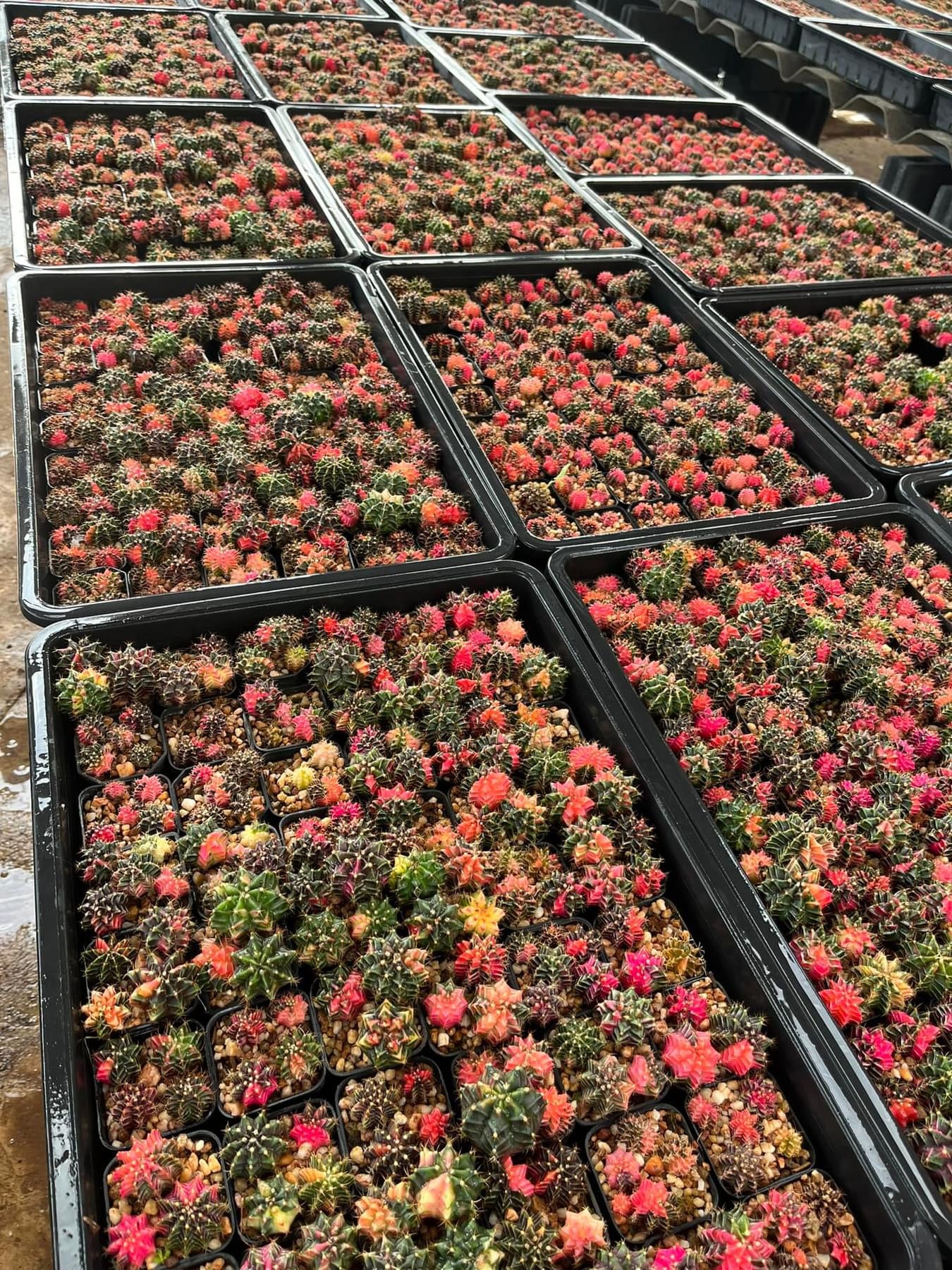sandbridgefarm
gymnocalycium mihanovichii variegata 1.5-2 cm ownroot grow from seed
Couldn't load pickup availability
**Gymnocalycium mihanovichii variegata**, commonly known as the "Moon Cactus," is a colorful and popular cactus species in the Gymnocalycium genus, originating from South America, particularly Paraguay and parts of Argentina. It is prized for its vibrant, variegated colors, which can range from bright red, yellow, orange, to pink.
### Key Characteristics:
1. **Variegation**: Unlike typical green cacti, the variegated version lacks chlorophyll in certain parts, leading to bright, striking colors. Due to the lack of chlorophyll, they require grafting onto a rootstock cactus, usually Hylocereus, which provides the nutrients the Moon Cactus needs to survive.
2. **Size**: The Gymnocalycium mihanovichii is small, usually only growing to about 1-2 inches in diameter, making it popular as a decorative plant for small spaces or indoors.
3. **Shape**: It has a round, ribbed body with small, non-threatening spines along its ribs. The ribs can sometimes show contrasting colors in the variegated version.
4. **Growth**: Because of the absence of chlorophyll, the plant depends entirely on its host cactus to grow. The grafted Moon Cactus doesn’t grow as vigorously as typical cacti, but it still requires some sunlight (indirect light) to maintain its bright colors.
### Care Tips:
- **Light**: Prefers indirect sunlight or filtered light. Direct, harsh sunlight can cause the colorful top to fade or burn.
- **Watering**: Like most cacti, it prefers well-drained soil. Water sparingly, letting the soil dry out between waterings. Overwatering can lead to root rot.
- **Temperature**: It thrives in warmer climates and should be kept indoors during colder months if you're in a temperate region. It doesn’t tolerate frost well.
- **Soil**: Use cactus or succulent soil with good drainage.
### Grafting:
Because Gymnocalycium mihanovichii variegata can't survive on its own, it needs to be grafted onto a host cactus. The grafting process helps provide the necessary nutrients that the colorful top part cannot produce due to the absence of chlorophyll.
It’s a low-maintenance plant that adds a pop of color to any plant collection, often seen as a "starter" plant for those getting into cacti due to its unique appearance.
Share













